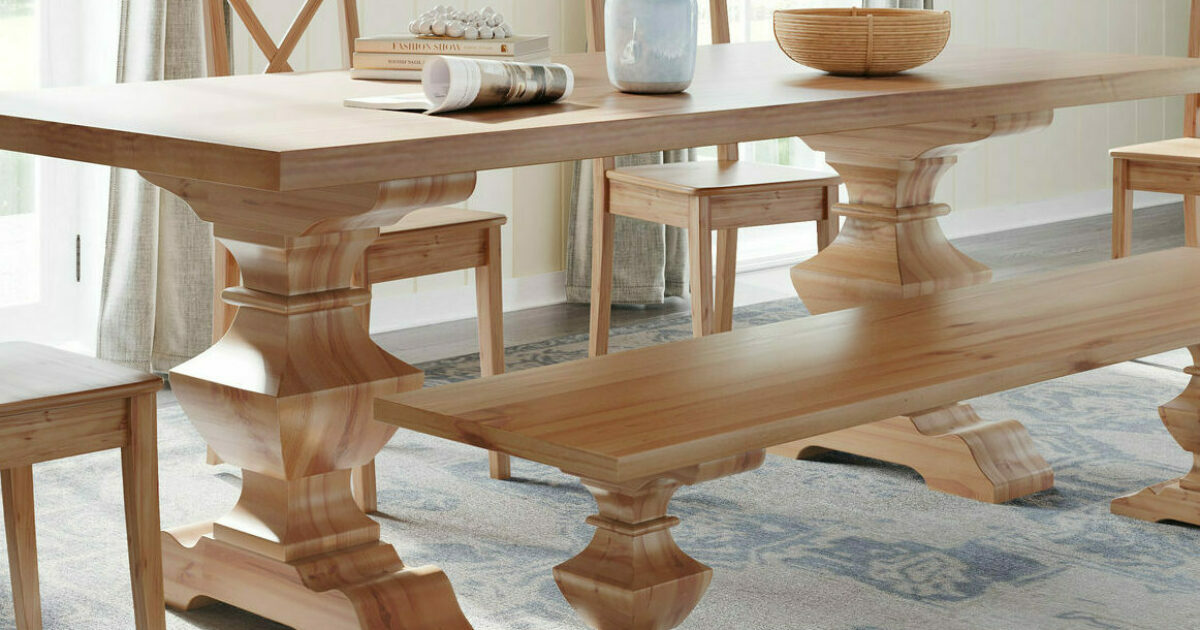Discover Classic Beauty in Handcrafted Dining Table Legs Wood Selections
Discover Classic Beauty in Handcrafted Dining Table Legs Wood Selections
Blog Article
Checking Out the Various Kinds Of Table Legs Wood for Your Dining Room
The choice of dining table legs wood can profoundly influence both the aesthetic and functional high qualities of your eating space. Strong timber options, such as oak and walnut, give a traditional appearance with unequaled durability, while crafted wood options supply cutting-edge designs that imitate the richness of natural grains.
Strong Wood Options

Unlike crafted products, strong timber is much less susceptible to bending and damage over time when appropriately preserved. Each item of strong wood is distinct, showcasing private attributes that add to the appeal and character of the dining table.
Additionally, solid timber can be ended up in countless means, varying from natural oils to discolored surfaces, enabling property owners to personalize their furniture to match their decor. In recap, picking strong wood for eating table legs not just makes certain architectural stability but also improves the visual appeal of the eating location, making it a beneficial investment for any home.
Engineered Timber Alternatives

Plywood, built from multiple layers of timber veneer, is especially strong and secure, making it an outstanding choice for eating table legs. Its layered make-up enables it to withstand adjustments in humidity and temperature much better than conventional strong wood. MDF, on the other hand, provides a smooth surface for paint or veneering, enabling developers to achieve a refined look while maintaining architectural integrity.
When choosing crafted wood choices, it is important to think about the designated usage and preferred visual. These products not just improve the capability of eating rooms yet additionally permit for better layout flexibility, ensuring that contemporary and conventional styles can coexist harmoniously.
Reclaimed Wood Includes
Redeemed timber supplies an one-of-a-kind mix of sustainability and personality, making it a significantly preferred choice for dining table legs. Sourced from old barns, factories, and other structures, redeemed wood symbolizes a history that brand-new products just can not duplicate. Each piece lugs its very own story, marked by distinctive blemishes, knots, and differing grain patterns, which add to a table's unique visual charm.
In addition to its visual beauty, recovered wood is an eco-friendly choice. By repurposing previously made use of products, it decreases the demand for brand-new lumber, thus helping to decrease and save forests waste. This straightens with a growing customer preference for sustainable techniques in decor.
Moreover, reclaimed timber top article is typically much more durable than recently harvested timber due to its age. The all-natural drying out process that reclaimed timber goes through lead to a denser and stronger product, making it less prone to warping and splitting. This improves the longevity of dining tables, permitting them to endure the roughness of everyday usage.
Softwood vs. Hardwood
When picking eating table legs, understanding the differences between softwood and hardwood is essential for achieving both functional and aesthetic objectives. They typically exhibit an even more rustic appearance, making them appropriate for casual or country-style dining rooms.
On the other hand, website here woods, sourced from deciduous trees like cherry, oak, and maple, are renowned for their density, toughness, and sturdiness. The detailed grain patterns and rich shades of woods supply a advanced and classic appeal, making them perfect for official dining settings. While woods often tend to be more pricey and larger, their strength against damage frequently warrants the financial investment.
Inevitably, the option between softwood and hardwood for eating table legs should line up with your design vision, use requirements, and spending plan, ensuring that your eating space mirrors your personal design while continuing click over here to be practical over time.

Therapies and finishes
The aesthetic allure and longevity of table legs can be considerably improved through different coatings and therapies. These procedures not just protect the wood from damage yet also elevate its look, enabling it to complement varied indoor designs.
One usual treatment is staining, which permeates the timber and boosts its natural grain while adding color. Discolorations provide an abundant, sophisticated appearance, making it possible for home owners to match their furnishings with existing design. On the other hand, clear coatings such as polyurethane or varnish produce a safety layer without changing the timber's initial shade, guaranteeing sturdiness versus wear and tear.
In addition, all-natural oils, like tung or linseed oil, nourish the wood and supply a refined sheen, all while being environmentally friendly. These oils enable the surface to breathe, avoiding moisture buildup and possible bending.
For those looking for a rustic charm, weathered or distressed coatings can be applied to develop an aged look, including character to the piece. Ultimately, the option of finishes and therapies depends on individual choice, preferred aesthetic appeals, and the particular timber kind, making it necessary to consider these aspects when selecting dining table legs for your room.
Conclusion
Solid woods, crafted alternatives, and recovered choices each deal distinct advantages, providing to numerous choices and requirements. Ultimately, the choice of timber kind need to align with preferred design, toughness, and ecological considerations, enhancing the general dining experience.
The selection of eating table legs wood can exceptionally affect both the aesthetic and functional high qualities of your dining area - Dining Table Legs Wood. Solid timber choices, such as oak and walnut, provide a classic look with unmatched resilience, while engineered timber options supply innovative styles that mimic the richness of all-natural grains. Solid timber uses a classic top quality that can boost the overall design of a dining room. Each piece of solid timber is special, showcasing private characteristics that include to the beauty and character of the dining table
Additionally, reclaimed timber is usually a lot more sturdy than freshly collected timber due to its age.
Report this page